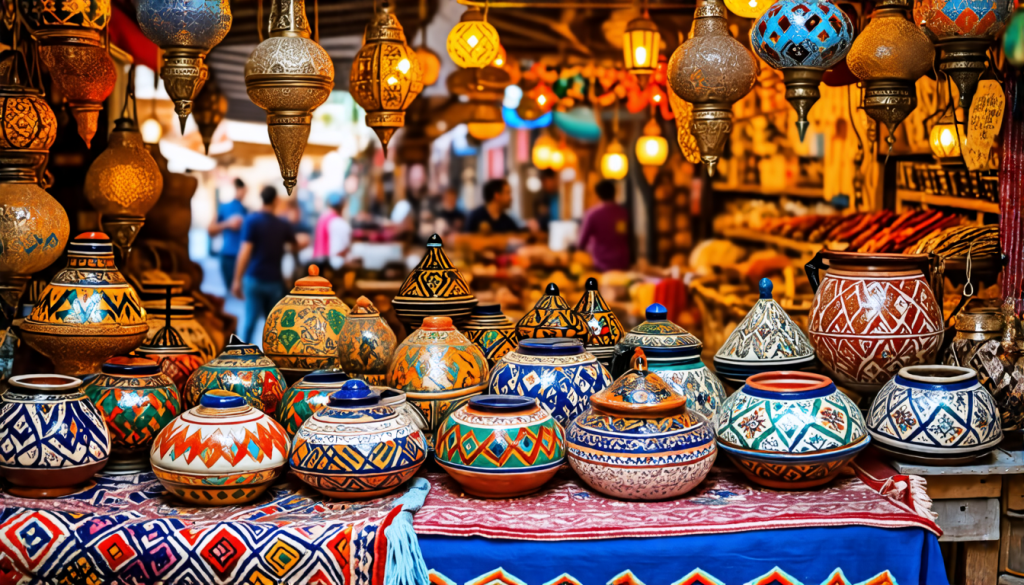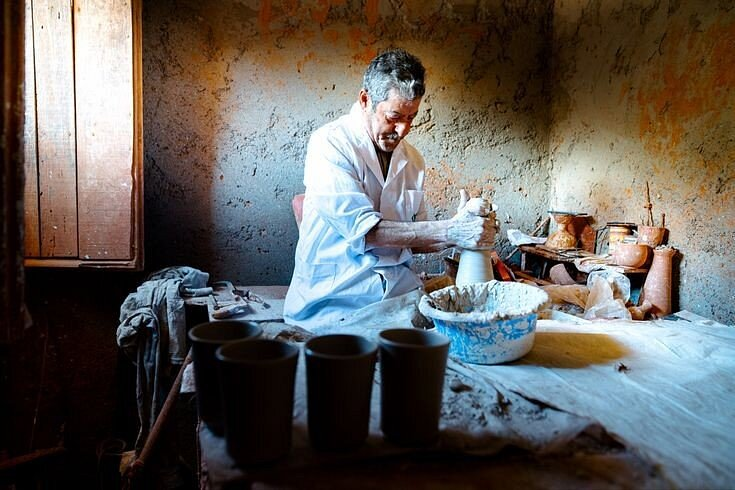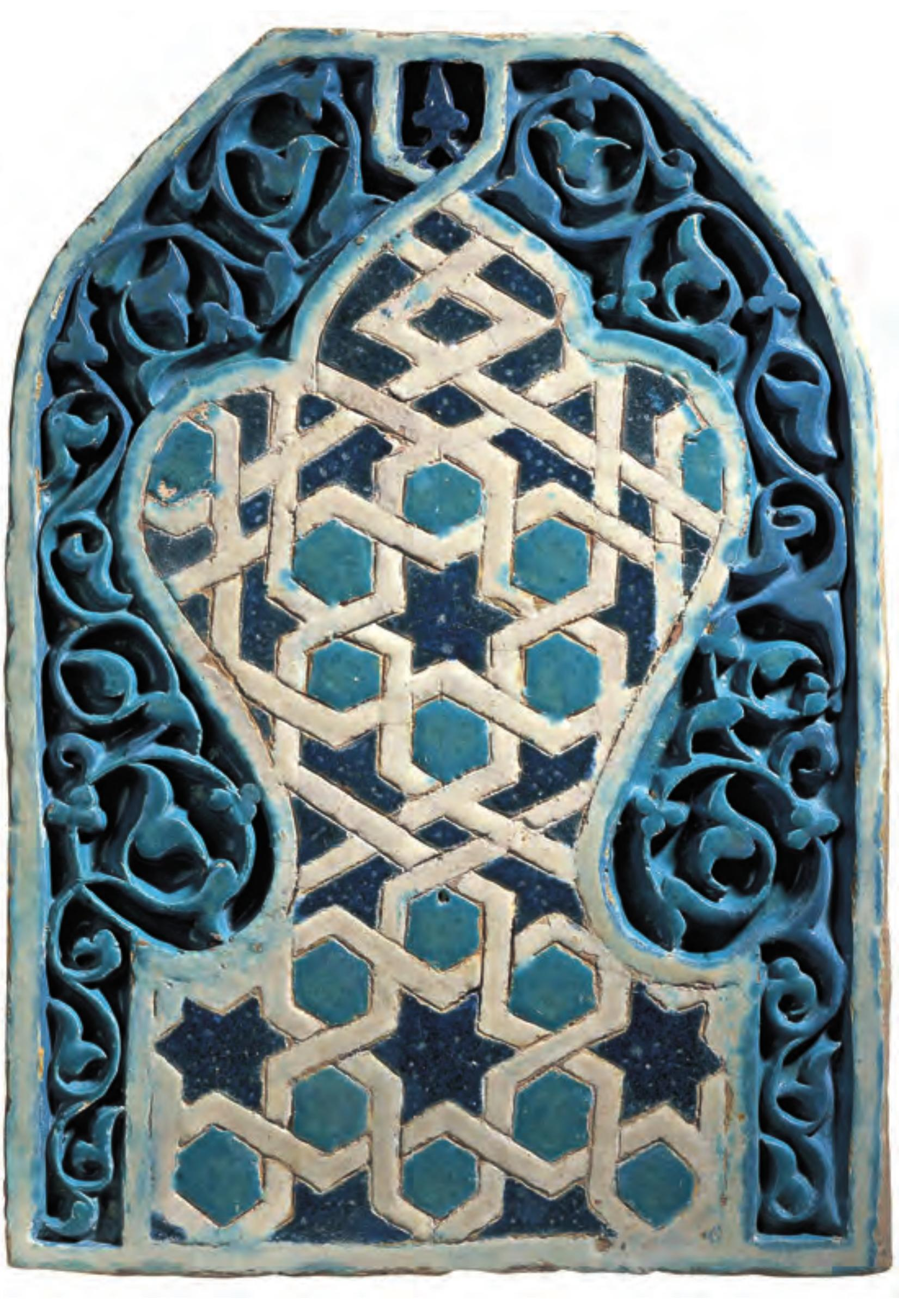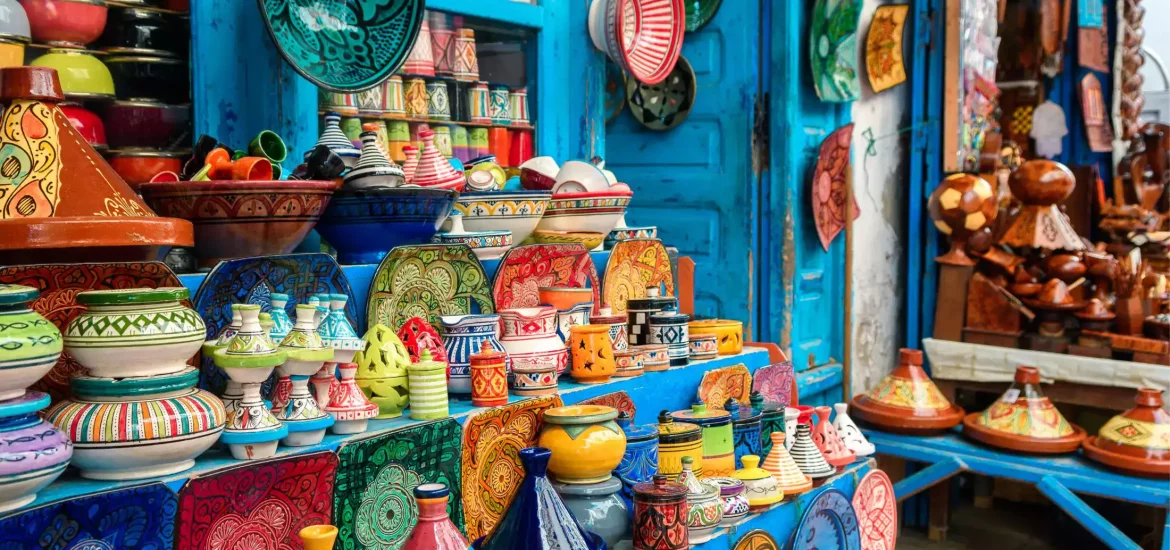- Published on
The Ancient Art of Moroccan Pottery Unveiling the Traditional Techniques of Safi and Sale
- Authors

- Name
- Adil ABBADI
Introduction
In the heart of Morocco, where the Atlas Mountains meet the Atlantic coast, lies a rich cultural tapestry woven from the threads of ancient traditions. Moroccan pottery, with its vibrant colors and intricate designs, is an integral part of this heritage. Among the many pottery-producing cities, Safi and Sale stand out for their exceptional craftsmanship and unique techniques. In this article, we'll delve into the world of traditional Moroccan pottery, uncovering the secrets of these two ceramic hubs.

- Historical Context
- Traditional Techniques of Safi
- Traditional Techniques of Sale
- Modern Relevance and Cultural Preservation
- Conclusion
- Cultural Call-to-Action
Historical Context
Moroccan pottery has its roots in ancient times, with archaeological evidence dating back to the Roman era. The art form evolved over the centuries, influenced by various cultures, including the Moors, Arabs, and Europeans. The city of Safi, in particular, has been a pottery hub since the 16th century, when it was a major trade center. Sale, located near Rabat, also has a long history of pottery production, with its unique style emerging in the 19th century.
Traditional Techniques of Safi
Safi pottery is renowned for its striking blue and white glazes, which are achieved through a labor-intensive process. The potters of Safi use a combination of traditional methods, including:
- Hand-throwing: Potters use a foot-powered wheel to shape the clay into symmetrical forms.
- Natural glazing: A mixture of powdered cobalt oxide and quartz is applied to the ceramic, creating a vibrant blue hue during the firing process.
- Intricate designs: Delicate patterns are hand-painted onto the pottery using a variety of techniques, including zellij (mosaic-like designs) and arabesque.

Traditional Techniques of Sale
Sale pottery, on the other hand, is characterized by its bold, geometric patterns and earthy tones. The potters of Sale employ techniques such as:
- Coiling: Clay is rolled into long ropes, which are then coiled and shaped into vessels.
- Slip-trailing: A liquid clay mixture is poured onto the pottery, creating a raised design.
- Earth-toned glazing: A combination of natural materials, including iron oxide and manganese, is used to achieve the distinctive earthy hues.

Modern Relevance and Cultural Preservation
While traditional techniques are still highly valued, many Moroccan potters are adapting to modern tastes and technologies. Contemporary designers are incorporating traditional methods into their work, creating innovative, fusion-style pieces. Efforts are also underway to preserve and promote Moroccan pottery, including:
- Workshops and training programs: Initiatives aimed at teaching traditional techniques to younger generations.
- Museum exhibitions: Showcasing the history and cultural significance of Moroccan pottery.
- Online marketplaces: Providing a platform for artisans to showcase and sell their work.

Conclusion
The traditional pottery techniques of Safi and Sale are a testament to Morocco's rich cultural heritage. These ancient crafts, passed down through generations, continue to inspire and influence ceramic artists around the world. As we appreciate the beauty and craftsmanship of Moroccan pottery, we must also acknowledge the importance of preserving these traditions for future generations.
Cultural Call-to-Action
As you explore the world of Moroccan pottery, remember to support local artisans and workshops. Visit the cities of Safi and Sale to experience the vibrant pottery markets and witness the craftsmanship firsthand. By embracing and celebrating these traditional techniques, we can ensure the continued vitality of Moroccan cultural heritage.
